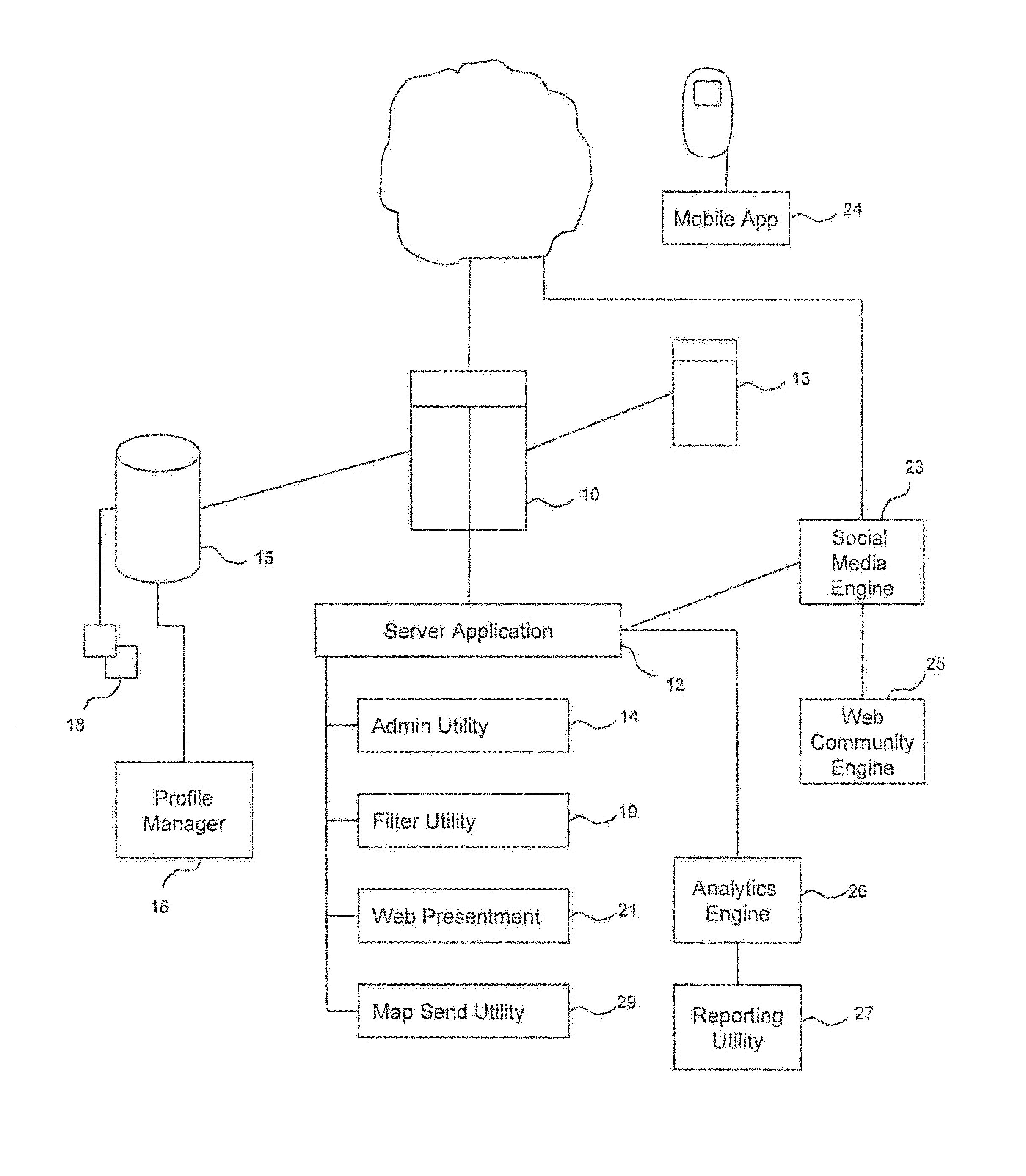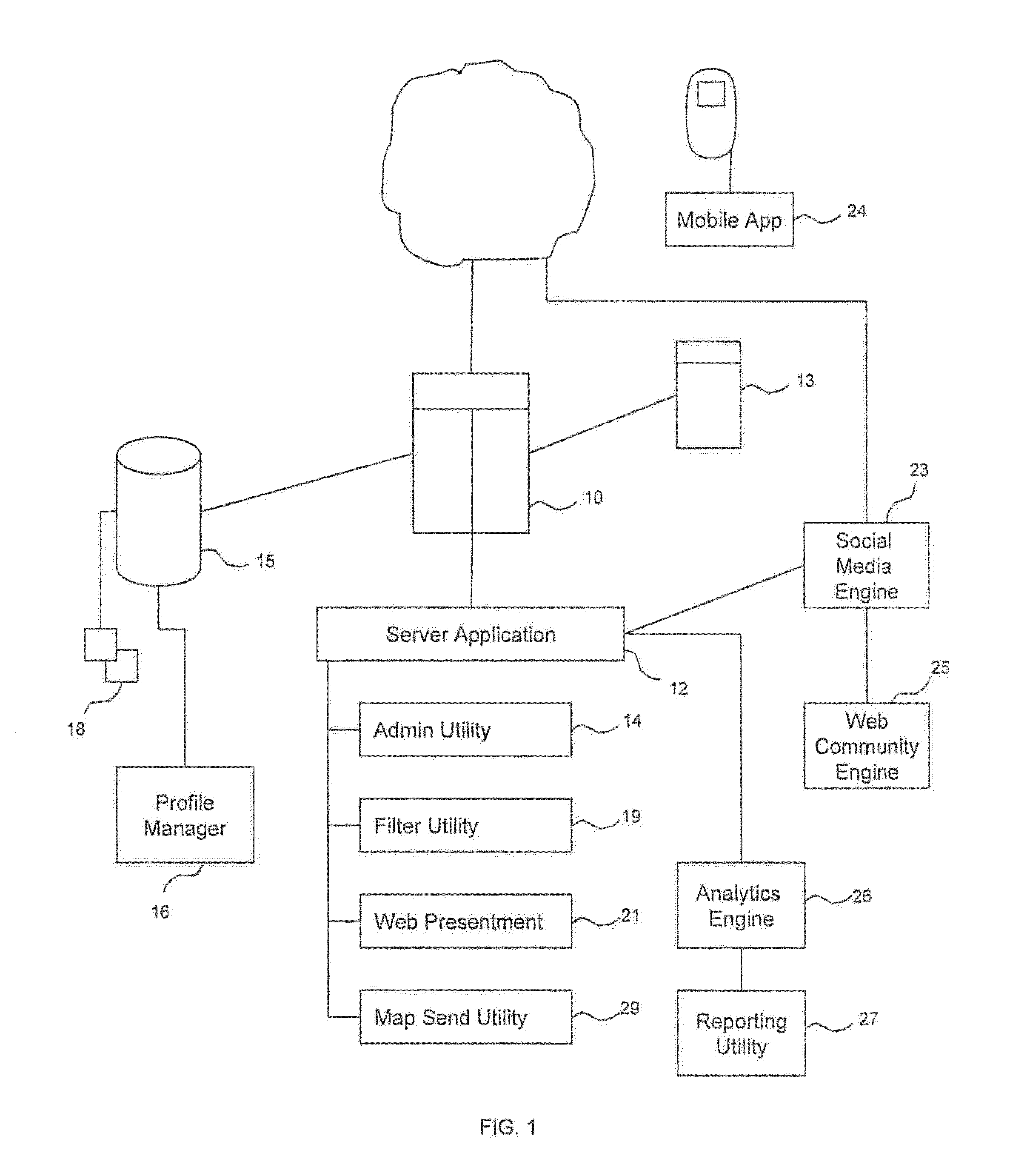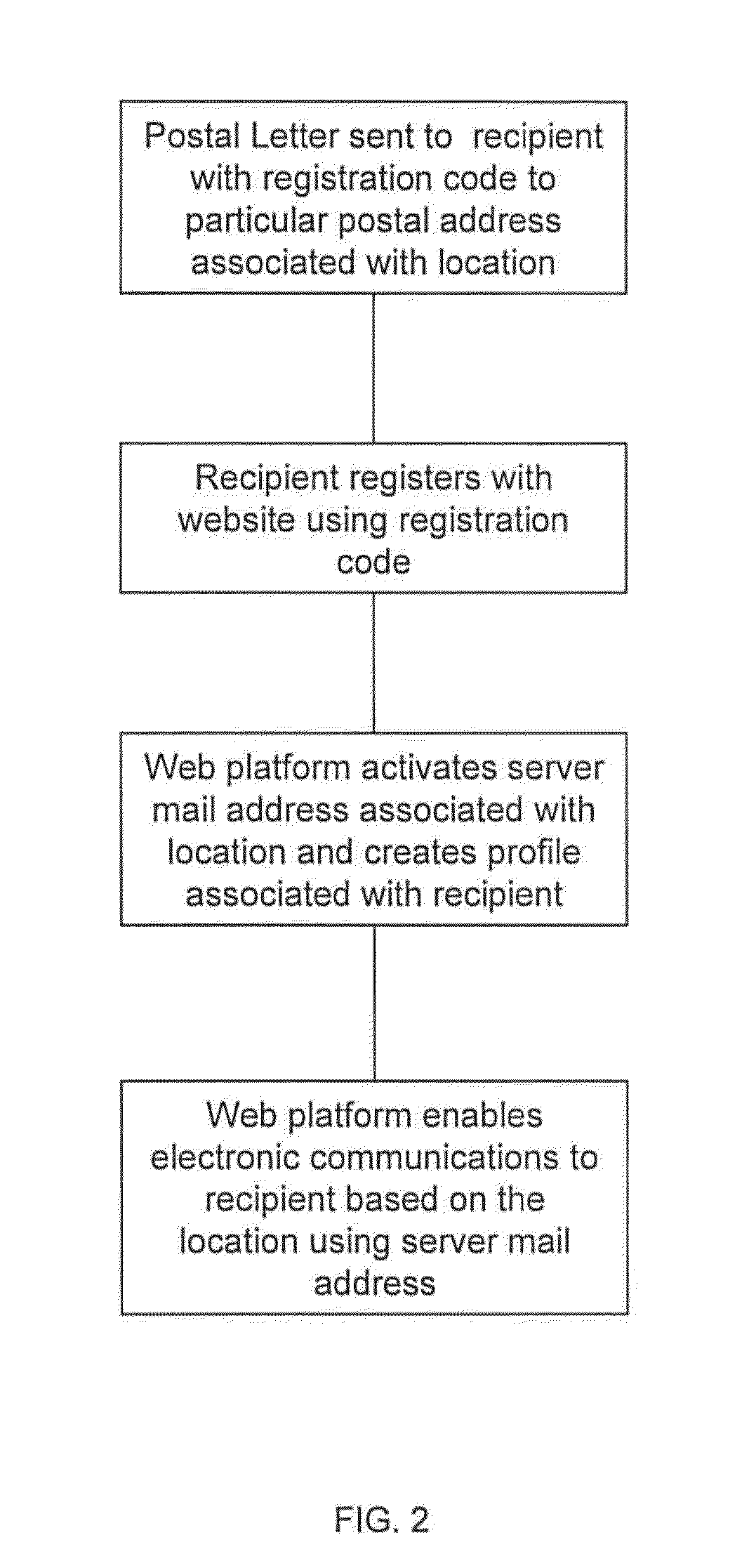Systems and Methods for Interactive Content Generation
a technology of interactive content and system, applied in the field of computer systems, can solve the problems of inability to obtain information, especially relating this to a particular location, and unable to achieve the effect of achieving the effect of achieving the effect of achieving the effect of achieving the effect of achieving the effect of achieving the effect of achieving the effect of achieving the effect of achieving the effect of achieving the effect of achieving the effect of achieving the effect of achieving the effect of achieving
- Summary
- Abstract
- Description
- Claims
- Application Information
AI Technical Summary
Benefits of technology
Problems solved by technology
Method used
Image
Examples
Embodiment Construction
[0054]The present invention is a computer network implemented communication system and method is provided that enables unknown entities (e.g., individuals, businesses or government organizations, referred to collectively as “entities”) to communicate with one another, even if there is no prior relationship established between said entities.
[0055]One embodiment of the present invention may incorporate a computer network implemented communication platform, enabled by a web environment by operation of one or more server computers (“server”) that enables senders to send electronic communications to recipients based on location. In particular the communication platform of the present invention may provide a unique, innovative solution for enabling senders and recipients to communicate, and the individuals and businesses who are the recipients to be unknown by the senders, and only their location is known. This form of communication provides numerous advantages over the prior art, includi...
PUM
 Login to View More
Login to View More Abstract
Description
Claims
Application Information
 Login to View More
Login to View More - R&D
- Intellectual Property
- Life Sciences
- Materials
- Tech Scout
- Unparalleled Data Quality
- Higher Quality Content
- 60% Fewer Hallucinations
Browse by: Latest US Patents, China's latest patents, Technical Efficacy Thesaurus, Application Domain, Technology Topic, Popular Technical Reports.
© 2025 PatSnap. All rights reserved.Legal|Privacy policy|Modern Slavery Act Transparency Statement|Sitemap|About US| Contact US: help@patsnap.com



